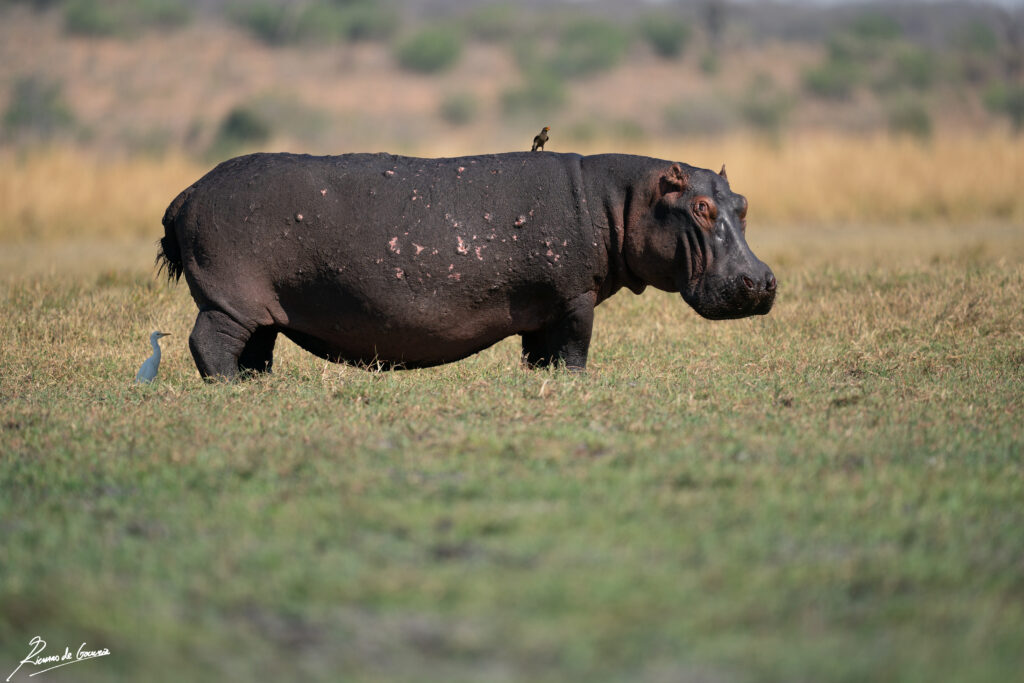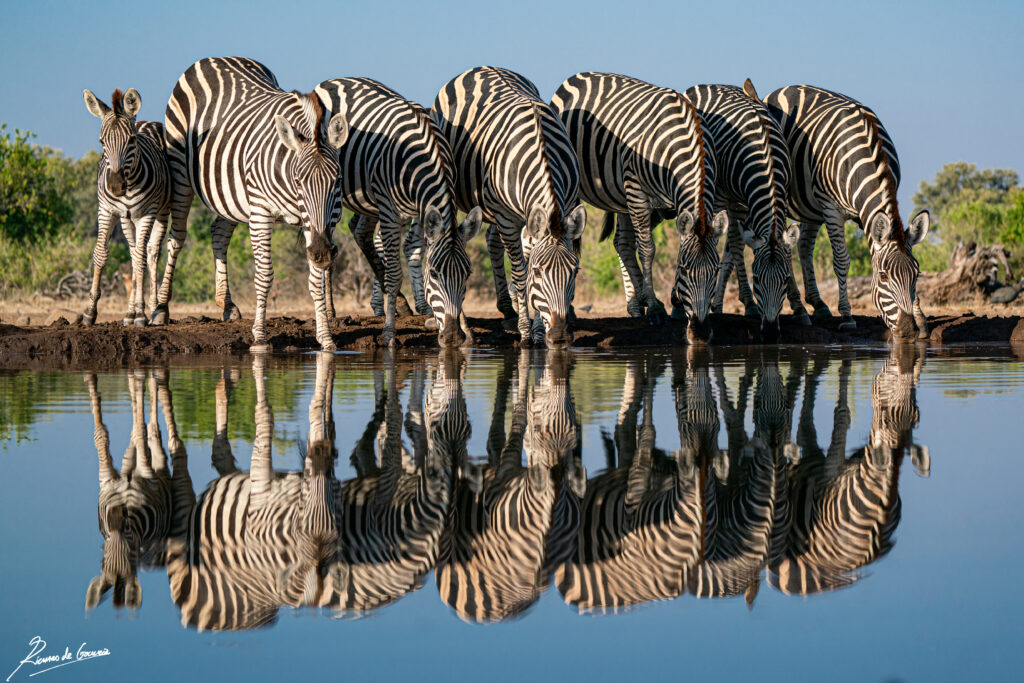Quirky questions we get asked – a lot
Sara • 10/04/2023
SHARE
The saying ‘ You can’t make this stuff up’ is especially true when it comes to the animal kingdom. Over time, animals & plants have developed an amazing strategy of adaptation to climatic conditions and habitat over time.
As Safari Guides, we often get asked the same questions over and over, here are 3 funny ones:
Why do giraffes have such long necks?
Do hippos stamp out fires?
Are zebras black with white stripes or white with black stripes?
Find out the answers below to these crazy queries:
Why do giraffes have such long necks?
The giraffe is of course the tallest mammal in the world, allowing them to browse exclusively in the topmost branches of trees. However, new research published in the journal Science in 2022 suggests that the new explanation is not as simple as that.
Their thinking is that the long, heavily muscled neck is used as a formidable weapon to use in combat. The longer the neck, the more brutal a headbutt to an opponent and likelihood of winning the fight! But then on the flip side, why do females have such long necks too? Others propose that their longer neck allows them a better chance of spotting predators.
The take home could be that there often isn’t an obvious reason why animals look the way they do, it’s just encouraging that we are still looking for answers and staying interested in the wild!

Do hippos stamp out fires?
There is a myth that hippos stamp out fires in the wild in a dramatic show of embers and flames. Often hunters and travellers would set up camp close to rivers in a nearby opening. It also stands to be assumed that a hippo that has been grazing at night would provide easy access back to the river, or the other way around, on to land to graze.
Therefore, any direct contact between humans and hippos is merely coincidental and they don’t go out of their way to stamp out fires, so don’t be too concerned the next time you go camping in Africa.

Are zebras black with white stripes or white with black stripes?
They are black with white stripes!
All zebras have a unique pattern of white on black stripes – like fingerprints.
However, all zebras have black skin and their entire hair coat grows form follicles from the skin. All follicles have melanocytes, cells that create the pigment melanin resulting in dark colouration. In Zebras the melanocytes in the white stripe follicle have been deactivated – turned off. As a result, no colour is produced in these zones leaving them white! To further substantiate this claim, an embryo is uniformly dark in colour. There you have it – in black and white!

